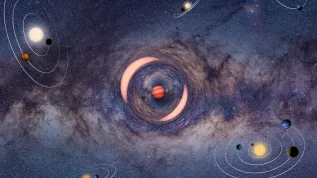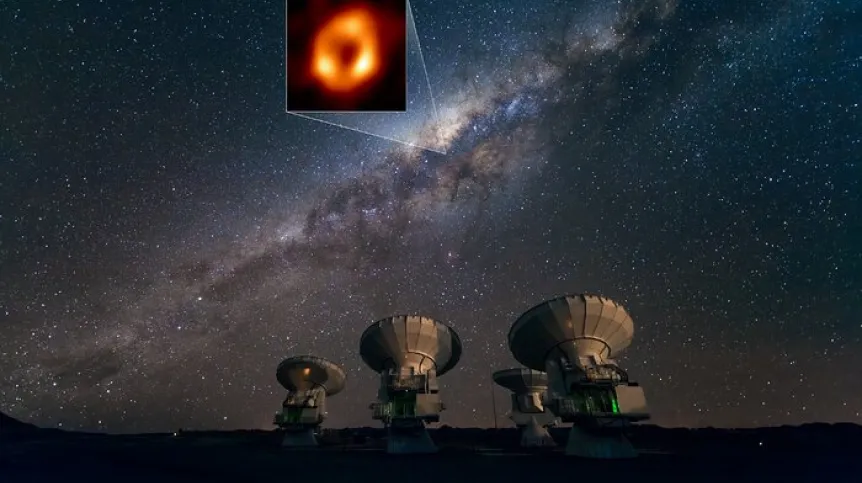
Scientists have presented the first image of a supermassive black hole in the centre of our galaxy.
It has long been thought that there is a supermassive black hole in the centre of our galaxy. Until now, the strongest evidence of this were observations of the movement of stars near the centre (Sagittarius A*, abbreviated Sgr A*), indicating the presence of a mass four million times greater than the mass of the Sun.
But now, images from the European Southern Observatory (ESO) and the Event Horizon Telescope (EHT) project show the first direct (visual) confirmation of the presence of this black hole in the centre of the Milky Way.
The image shows a shadow of a black hole and a halo next to the black hole's event horizon. The shadow size of the black hole's shadow is about 52 microseconds of the sky bow in the sky.
A Black hole is an area where gravitational pull is so powerful that it does not allow any matter or even light to escape. To produce it, a very large mass has to accumulate a in a small volume. The mathematical border of this area is called the event horizon. There are two main types of black holes: the ones with star masses and supermassive black holes with masses of millions and even billions of solar masses.
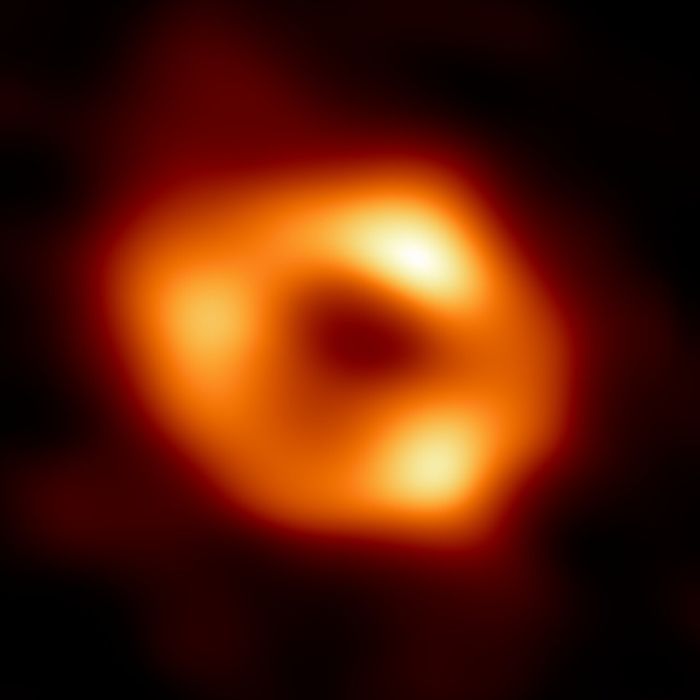
Geoffrey Bower, an astronomer at Academia Sinica, Taipei (Taiwan) and EHT collaborator said: “We were stunned by how well the ring size agreed with predictions from Einstein's theory of general relativity. These unprecedented observations have greatly improved our understanding of what happens at the very centre of our galaxy and offer new insights on how these giant black holes interact with their surroundings.”
The recent image is not the first of the black hole in history. In 2019, the results of observations of the shadow of the black hole from the Messier 87 galaxy (the object M87*) were announced. In both cases, we are dealing with supermassive black holes, but there are differences between them: M87* is about 1600 times more massive than Sgr A*.
In the case of black holes, mass is directly proportional to radius, so M87* is also 1600 times larger. However, due to the distance difference, both have a similar angular size for us in the sky. The black hole M87* lies at a distance of 55 million light years, and from Sgr A* is 27,000 light years from Earth.
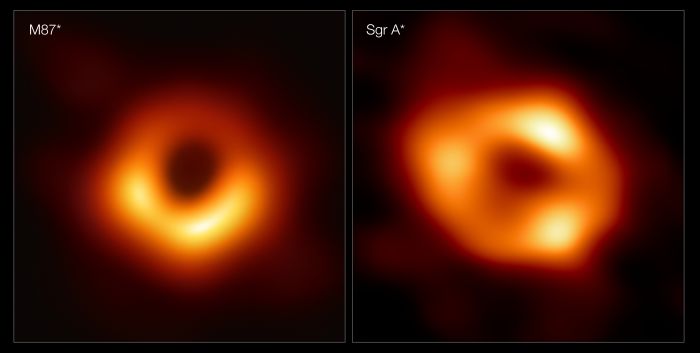
According to scientists, despite these differences, the objects are very similar. Sera Markoff from the University of Amsterdam in the Netherlands, a co-chair of the EHT Scientific Council, explains that we have two completely different types of galaxies and two very different black hole masses, but close to the edge of these black holes they look amazingly similar.
This tells us that general relativity governs these objects up close, and any differences we see further away must be due to differences in the material that surrounds the black holes.
Observations of 'our' black hole were much more difficult than in the M87 galaxy due to the much faster variability of the black hole area. In both cases, gas near the black hole moves at the same speed, close to the speed of light. However, hot plasma takes days or even weeks to orbit M87*, while the entire orbit around Sgr A* only takes minutes. This means the brightness and pattern of the gas around Sgr A* change much more rapidly, making it difficult to obtain a stable image. Scientists had to develop methods taking gas movements into account. This was the reason why the results for M87* were announced a few years ago, and for Sgr A* only now.
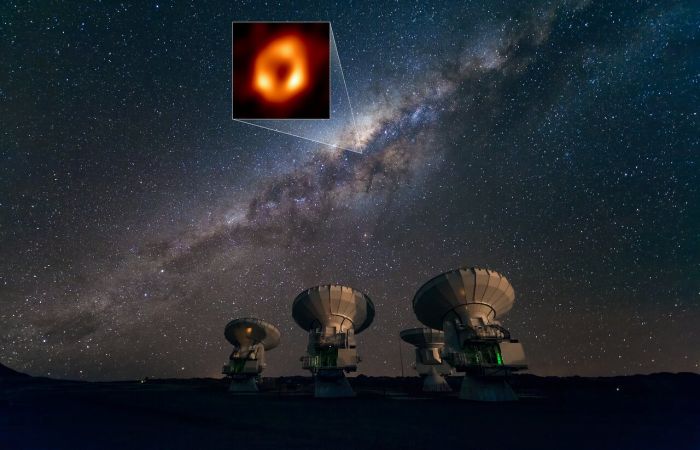
A team consisting of over 300 scientists from 80 institutes around the world took part in the project. A number of radiotelescopes were used for observations carried out in April 2017: Atacama Large Millimeter/submillimeter Array (ALMA), Atacama Pathfinder EXperiment (APEX), IRAM 30-meter Telescope, James Clerk Maxwell Telescope (JCMT), Large Millimeter Telescope Alfonso Serrano (LMT), Submillimeter Array (SMA), UArizona Submillimeter Telescope (SMT), South Pole Telescope (SPT). Since then, Greenland Telescope (GLT), NOrthern Extended Millimeter Array (NOEMA) and UArizona 12-meter Telescope na Kitt Peak have also been added to the EHT network.
The researchers published their results in a series of papers in The Astrophysical Journal Letters.
In addition to research teams and telescopes, European contributions included a supercomputer for compiling EHT data, maintained at the Max Planck Institute for Radio Astronomy in Germany, and financial grants of the European Council for Scientific Research and Max Planck Society in Germany.
There are two Polish researchers in the EHT team: Professor Monika Mościbrodzka from Radboud University in Nijmegen (Netherlands) and Dr. Maciek Wielgus from the Max Planck Institute for Radioastronomy in Bonn (Germany). Professor Monika Mościbrodzka made a significant contribution to the theory related to publications, and Dr. Wielgus - into data processing. He is the first author of one of the publications concerning the Sgr A* brightness curve changes.
Now that scientists have images of two supermassive black holes (one from the upper and the one from the lower end of the range of the masses of such objects), they can study the differences between them and better test the behaviour of gravity in such extreme environments.
There are also chances of obtaining even better data, because the March 2022 EHT observation included more telescopes than before.
PAP - Science in Poland, Krzysztof Czart
cza/ zan/ kap/
tr. RL

